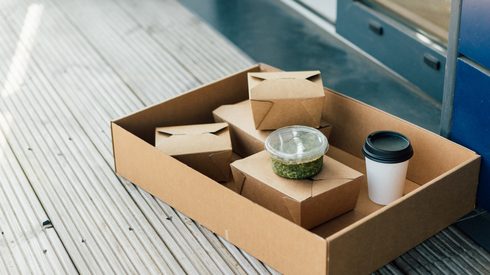In a marketplace with more than enough supply and unsettled demand, pricing for linerboard held unchanged for January, as major integrated mills lined up their Jan. 1 invoices for higher pricing of $70/ton on linerboard and $100-110/ton for corrugating medium in North America’s open market.
Based on Fastmarkets’ PPI Pulp & Paper Week pricing survey, roughly one-third of buyers and sellers reported higher pricing, mainly in the $40/ton to $70/ton area; one-third reported no change in their linerboard prices for January compared with their levels in December; and one-third reported lower January pricing compared with their levels in December. Those lower prices for this month were reported separately, in addition to P&PW’s $20/ton index decline on linerboard and medium in November.
Want to know what’s behind your packaging price? Our cutting-edge Index Builder tool can provide valuable insights into how market volatility affects packaging costs, allowing you to make informed decisions and negotiate better deals. Learn more.
Of those who reported no change or lower pricing, most said they anticipated a coming linerboard price increase. Most claimed to be in a “wait and see” mode on pricing this week and others foresaw linerboard increases for February or March, at rates uncertain.
Are higher prices on the horizon?
This all came as major producers claimed higher cost pressures that seemed stiflingly a result of ongoing inflation. These conditions shrunk margins, especially for recycled linerboard producers, they said.
The increase would be the first one in almost two years. One of the most threatening business points of this for boxmakers was how they would pass a linerboard increase onto their customers. Major integrateds announced box price increases for this month of mainly 14%.
A small Chicagoland boxmaker said he couldn’t take that size increase to his customers because he would lose them, without a doubt. He was not alone. He suggested the best he could do was perhaps a 6-9% increase for his corrugated boxes.
Another Midwest boxmaker told of expecting the increase in February, at least partially. The contact reported paying or committing to no increase this month. Others who had thumped down strongly against an increase in early December now expected that the increase was here and could touch the full market in North America.
Possibly, the viewpoint change was related to improved demand.
Demand and consumer buyer habits
One large integrated told of 10% year-over-year per-day box volume growth in December and an expectation for anywhere from 4-8% growth this month. Contacts named a major integrated who saw “strong” demand going forward. Several smaller boxmakers with large pieces of their business in food told of shipment growth already this month in the mid-single digits on a year-over-year basis.
Various boxmakers around the country believed that end-users ended 2023 with slightly lower box inventory and then came out in early January, along with the price increase, looking to stock up, somewhat.
Still, one smaller mill company official admitted: “The destocking is over. The restocking is not coming as fast as we want.”
Destocking that began around mid-2022 decimated US box shipment totals, with actual US shipments down 6-7% for five quarters from third-quarter 2022 through third-quarter 2023. The Fibre Box Association reports fourth-quarter box shipment volumes on Jan. 26.
Export KLB prices hold unchanged
US export kraft linerboard prices did not budge, according to the P&PW price survey this month. They remained at their December 2023 levels as is for January. That was unusual – as US export kraft linerboard pricing plummeted by roughly $200 to $300 per tonne since the summer of 2022 and dropped every month in two to four major regions. Global box demand this month remained less than strong in these key US destinations: Mexico, South/Central America, China, and southern Europe’s Italy and Spain.
One exporter still suggested that US kraft linerboard to Mexico might increase in price in February. However, some US exporters have called for higher prices for several months now, yet no across-the-board increases have occurred. This was the case because there remained too much supply, boxmakers around the world said in the last two weeks.
In the US this week, there was more than enough supply of containerboard, contacts told P&PW, and timing of deliveries was average for both boxes and linerboard. Linerboard deliveries from order day were three to five weeks, and boxes were mostly if not completely delivered in no more than nine days, contacts told P&PW this week.
Interested in learning more? Discover what’s driving volatility in your markets and how our market-reflective price data and analytics can help you capitalize on market opportunities. Learn more.







